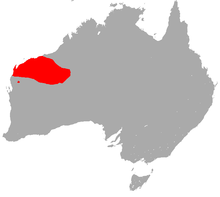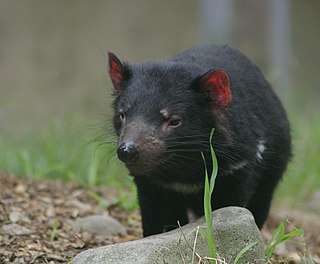
The Dasyuridae are a family of marsupials native to Australia and New Guinea, including 71 extant species divided into 17 genera. Many are small and mouse-like or shrew-like, giving some of them the name marsupial mice or marsupial shrews, but the group also includes the cat-sized quolls, as well as the Tasmanian devil. They are found in a wide range of habitats, including grassland, underground, forests, and mountains, and some species are arboreal or semiaquatic. The Dasyuridae are often called the 'marsupial carnivores', as most members of the family are insectivores.

The common planigale, also known as the pygmy planigale or coastal planigale, is one of the small carnivorous marsupials known as "marsupial mice" found in Australia. There they fill a similar niche to the insectivores of other parts of the world.
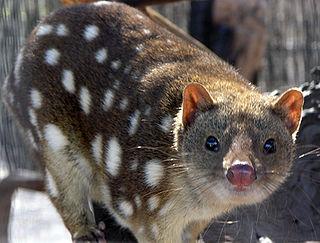
The subfamily Dasyurinae includes several genera of small carnivorous marsupials native to Australia: quolls, kowari, mulgara, kaluta, dibblers, phascogales, pseudantechinuses, and the Tasmanian devil. The subfamily is defined largely on biochemical criteria.
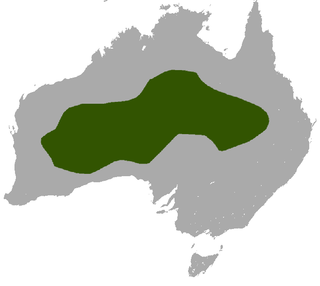
The Wongai ningaui is a tiny carnivorous marsupial native to the arid open grasslands of inland Australia. Their diet is mainly small insects, and occasionally larger prey such as spiders, grasshoppers and cockroaches, which they forage for at the ground and in clumps of spinifex. They have long and untidy fur, grey or gingery brown with longer black hairs, small ears, a narrow muzzle, and possess a partially prehensile tail and feet that allow them to climb. The population occurs sparsely across a wide area and common in favourable habitat, especially in years of good rainfall. Ningaui ridei was first described in 1975, one of two species of a new genus discovered amongst the poorly known mammals of the western regions of Australia.

The yellow-footed antechinus, also known as the mardo, is a shrew-like marsupial found in Australia. One notable feature of the species is its sexual behavior. The male yellow-footed antechinus engages in such frenzied mating that its immune system becomes compromised, resulting in stress–related death before it is one year old.

Antechinus is a genus of small dasyurid marsupial endemic to Australia. They resemble mice with the bristly fur of shrews.

The tribe Dasyurini includes several genera of small carnivorous marsupials native to Australia: quolls, kowari, mulgara, kaluta, dibblers, neophascogales, pseudantechinuses, and the Tasmanian devil.

The white-tailed dunnart, also known as the ash-grey dunnart, is a dunnart native to Australia.

The fat-tailed false antechinus, also called the fat-tailed pseudantechinus and red-eared antechinus, is a member of the order Dasyuromorphia. It is an inhabitant of western and central Australia. Its species name, macdonnellensis, refers to the MacDonnell Ranges near Alice Springs, where it was first discovered.

The Alexandria false antechinus, also known as the Carpentarian false antechinus or Carpentarian pseudantechinus, is a small carnivorous marsupial, found only in a number of small, isolated localities in northern Australia. It is the smallest and rarest of the false antechinuses.
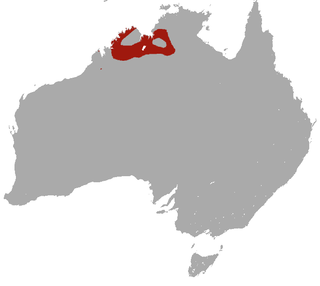
The Ningbing false antechinus, also known as the Ningbing pseudantechinus, is a small species of carnivorous marsupial found in north-western Australia. It is locally common throughout the Kimberley region of Western Australia and the Northern Territory.

Woolley's false antechinus, also known as Woolley's pseudantechinus, is a species of small carnivorous marsupial belonging to the family Dasyuridae. It is found in the Australian state of Western Australia, primarily in the Pilbara, Ashburton and Murchison regions.

Rory Cooper's false antechinus, also known as the tan false antechinus and the tan pseudantechinus, is a recently named species of small carnivorous marsupial which inhabits rocky outcrops in Western Australia. Nothing is known of its behaviour but it is expected that this will be similar to other members of the false antechinus genus. A study published in 2017 found no support for separation as a new species of Pseudantechinus, and the name was proposed to be synonymous with the previously described Pseudantechinus macdonnellensis.
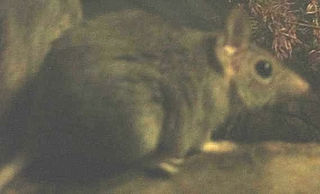
The fawn antechinus is a species of small carnivorous marsupial found in northern Australia. It is the only Antechinus to be found in the Northern Territory and has a patchy, restricted range.

The Atherton antechinus, also known as Godman's antechinus, is a species of small carnivorous, insectivorous marsupial native to Australia. It is one of the rarest members of its genus, and differs from other antechinuses in its more rufous body colour and small eyes.
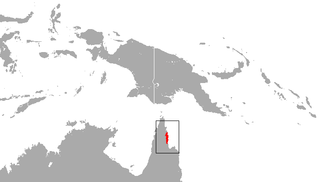
The cinnamon antechinus, also known as the Iron Ranges antechinus and the Cape York antechinus, is a species of small carnivorous marsupial of the family Dasyuridae. It is the only mammal endemic to Cape York Peninsula, being confined to semideciduous forest around the McIlraith and Iron Ranges. Along with the Atherton antechinus, it is the rarest in its genus.

The Pilbara ningaui, sometimes known as Ealey's ningaui, is a tiny species of marsupial carnivore found in Australia.

The southern ningaui is a tiny marsupial carnivore belonging to the Dasyuridae family. Similar in appearance to Ningaui ridei, found throughout central Australia, this species occurs in spinifex on semi-arid sandplains across the southern coast of the continent. The fur is a tawny or greyish olive colour, light grey below, and distinguished by shades of cinnamon. The southern ningaui prefers smaller prey, including insects and spiders, but capable of killing and consuming larger animals such as cockroaches and skinks. Their narrow muzzle is used with quick and fierce bites about the head to despatch their meal. The species was first described in 1983, and placed within the genus Ningaui.

Ningaui is a genus of small species of the marsupial dasyurid family. Along with the planigales, they are among the smallest marsupials.
